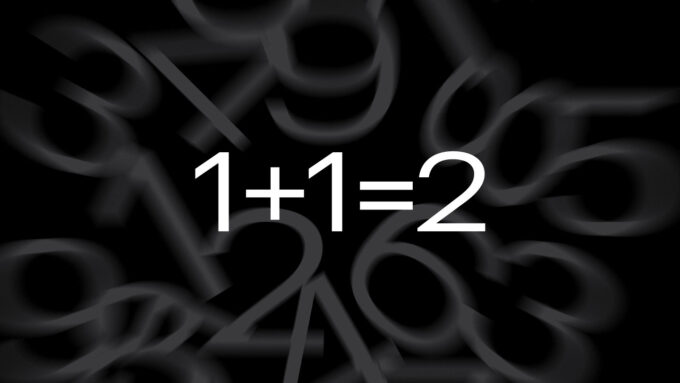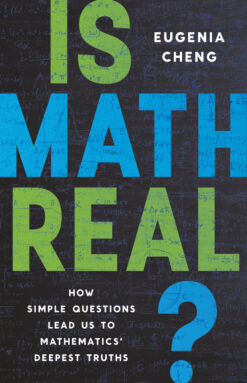Is Math Real?
Eugenia Cheng
Basic Books, $30
Every mathematician has a story that goes something like this. You’re at a party, and someone asks what you do for a living. “I’m a mathematician,” you say. “You must be a genius!” they reply. Or perhaps you end up being an impromptu therapist to someone who needs to vent about traumatic experiences they had in math class decades ago.
Mathematics is treated with both reverence and fear: People often see math as an objective, apolitical tool that can buttress or refute arguments, but they also feel intimidated and anxious when they think they might have to use it.
Mathematician Eugenia Cheng has spent much of her career working to alleviate those anxieties. As scientist in residence at the School of the Art Institute of Chicago, she teaches mathematics to artists, many of whom have never seen themselves as “math people.” She has also written several books, for both adults and children, that seek to cultivate mathematical curiosity and illustrate some of the ways mathematical thinking can enrich our lives. Her latest, Is Math Real?: How Simple Questions Lead Us to Mathematics’ Deepest Truths, demonstrates the ways that seemingly naïve questions can unlock fascinating journeys to understanding math for math’s sake, rather than purely in service of real-world applications.
Math has a reputation for supplying concise, black-or-white answers to questions. Getting straightforward math questions right or wrong is often presented as the litmus test of whether someone has mathematical ability. But that view of math is simplistic, Cheng explains. Rather than a tool for obtaining objective right answers, math is a method for asking questions and exploring the possibilities those questions raise.
Students are naturally curious about numbers and patterns, but math classes often teach them that math facts should be accepted without question. For instance, a student might learn that a prime number is defined as a whole number — a positive number without a fractional or decimal part — that is only divisible by itself and 1. The number 1, however, is not considered a prime number. If a student asks why not, they will likely be told it just isn’t; deal with it.
But in fact, there is a good reason to exclude 1 from the prime numbers. As Cheng describes, the prime numbers are the multiplicative building blocks of the whole numbers; every whole number greater than 1 can be broken down as a product of prime numbers. Because multiplying by 1 doesn’t do anything to a number, 1 isn’t needed to build the other whole numbers, at least when multiplication is considered. (For addition, it’s a whole different story.) Excluding 1 from the primes allows us to break every whole number greater than 1 down into a product of primes in only one way — 12 is the product of two copies of 2 and one copy of 3, for example, and cannot be broken down into any different set of primes. If 1 were a prime number, those products would no longer be unique. You could toss any number of 1s into the mix and still get the same product.
Mathematicians have found the uniqueness of these products useful for exploring properties of numbers, so they came to the consensus not to include 1 in the primes about a century ago. Considering the reasons mathematicians define primes precisely the way they do is more interesting than simply accepting the definition so you can get an A on a math test.
The prime number example is just one of many simple questions that Cheng poses in the book to motivate deep dives into the logical foundations of Western mathematics: Why does 1+1 = 2? Why does −(−1) = 1? Why does 2+4 = 4+2? And, yes, is math real? Cheng’s answers to those questions touch not only on our understanding of mathematics itself, but also on her personal experiences with math education as both student and teacher.
She also examines how mathematical thinking intersects with life within and outside of the classroom, from the subtle imperialism of the commonly used Mercator map projection, which inflates the perceived size of countries that were colonialist powers, to the parallels between open-mindedness to new mathematical ideas and open-mindedness to the experiences of marginalized groups in society.
Is Math Real? will help readers understand the questions that drive mathematicians and encourage people to see the value of math in their own lives.
Buy Is Math Real? from Bookshop.org. Science News is a Bookshop.org affiliate and will earn a commission on purchases made from links in this article.







